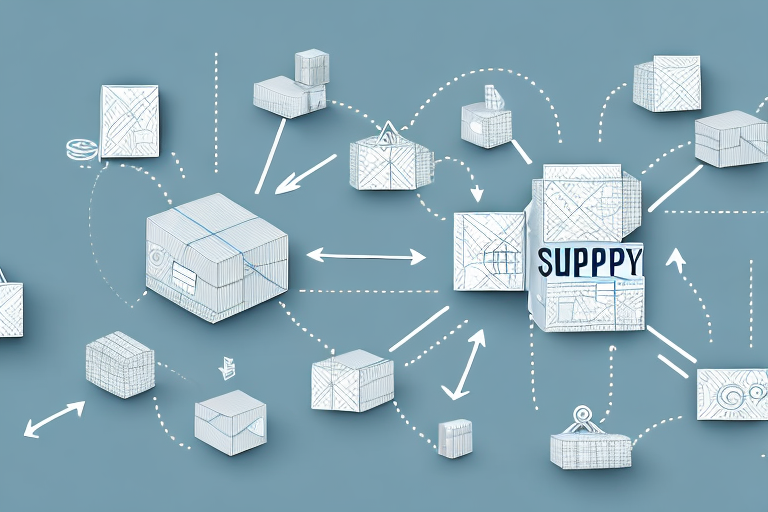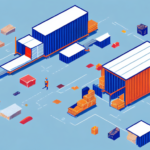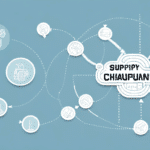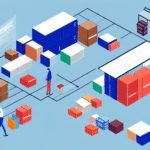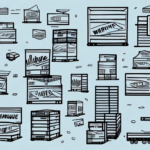What Is Reverse Logistics? Exploring the Basics of This Supply Chain Process
Reverse logistics is a critical component of supply chain management that involves the efficient flow of goods from their final destination back to their origin. This process includes the planning, implementation, and control of the movement of raw materials, finished products, and information from the point of consumption to the point of origin. The primary objectives are to recapture value or ensure the proper disposal of products. By fostering a sustainable approach to waste management, reverse logistics helps reduce costs and enhance customer satisfaction.
The Importance and Benefits of Reverse Logistics in Modern Business
Cost Savings and Waste Reduction
Implementing a robust reverse logistics strategy can lead to significant cost savings by maximizing the value of returned products and minimizing waste. According to a Forbes article, effective reverse logistics can reduce overall supply chain costs by up to 30%.
Enhancing Customer Loyalty and Satisfaction
Businesses that manage returns efficiently can improve customer satisfaction and build loyalty. A streamlined returns process ensures that customers receive prompt and hassle-free service, encouraging repeat business and positive word-of-mouth referrals.
Sustainability and Environmental Responsibility
Reverse logistics plays a vital role in sustainability efforts by promoting recycling, refurbishing, and proper disposal of products. This not only reduces the environmental impact but also enhances a company's reputation as an eco-friendly business.
Differences Between Reverse and Forward Logistics
Direction of Flow
While forward logistics involves moving goods from production to consumers, reverse logistics deals with the return flow from consumers back to the origin. This distinction necessitates different processes and management strategies.
Purpose and Processes
Forward logistics focuses on fulfilling customer orders and ensuring timely delivery. In contrast, reverse logistics manages returns, repairs, recycling, and disposal. Processes in reverse logistics may include product inspection, refurbishment, and repackaging.
Impact on Sustainability
Reverse logistics contributes significantly to sustainability by enabling the recycling and reuse of products, thereby reducing waste and conserving resources. This contrasts with forward logistics, which primarily aims at meeting customer demand.
The Reverse Logistics Process: A Comprehensive Overview
Step 1: Product Return Initiation
The process begins when a customer initiates a return. This could be due to various reasons such as product defects, dissatisfaction, or end-of-life recycling.
Step 2: Inspection and Assessment
Returned products are inspected to determine their condition and the reason for return. This assessment helps decide whether the product can be refurbished, resold, or needs to be recycled or disposed of.
Step 3: Repackaging and Refurbishment
If a product is deemed reusable, it is repackaged or refurbished. This step prepares the product for resale, either as a refurbished item or within new packaging.
Step 4: Recycling and Disposal
Products that cannot be reused are either recycled or properly disposed of, depending on their nature and environmental considerations.
Step 5: Transportation Management
Efficient transportation is crucial in reverse logistics. Coordination with carriers and logistics providers ensures that returned products are moved cost-effectively and sustainably.
Common Challenges in Reverse Logistics and Strategies to Overcome Them
Lack of Visibility
One of the main challenges is the limited visibility in the reverse supply chain. To address this, businesses can implement advanced tracking systems and data analytics to monitor returns in real-time.
Inconsistent Return Policies
Inconsistent return policies can lead to customer confusion and inefficiencies. Establishing clear and uniform return policies helps streamline the process and improve customer experience.
Communication Breakdowns
Poor communication between supply chain stakeholders can hinder the reverse logistics process. Enhancing communication channels and fostering collaboration among all parties involved can mitigate this issue.
The Role of Technology in Enhancing Reverse Logistics Efficiency
Automation and Robotics
Automation tools and robotics can significantly speed up the returns process, reducing the time and labor required for inspection and repackaging. Technologies like automated sorting systems are increasingly being adopted in warehouses.
Artificial Intelligence and Predictive Analytics
AI and predictive analytics enable businesses to forecast return volumes and identify patterns in returns. This foresight allows companies to proactively address common issues and optimize their reverse logistics strategies.
Blockchain for Transparency
Blockchain technology enhances transparency and accountability in the reverse supply chain by providing an immutable record of transactions. This ensures data integrity and traceability throughout the reverse logistics process.
Best Practices for Optimizing Reverse Logistics Operations
Implementing Efficient Processes
Streamlining reverse logistics processes through standardized procedures and clear guidelines ensures consistency and efficiency in handling returns.
Leveraging Data and Analytics
Utilizing data analytics to understand return trends and customer behavior helps in making informed decisions to reduce return rates and enhance product quality.
Collaborating with Supply Chain Partners
Building strong relationships with suppliers, logistics providers, and other stakeholders fosters collaboration and improves the overall effectiveness of reverse logistics operations.
Adopting Sustainable Practices
Incorporating sustainability into reverse logistics, such as using eco-friendly materials for packaging and prioritizing recycling, aligns business operations with environmental goals.
Case Studies: Successful Reverse Logistics Strategies in Action
Dell's Closed-Loop Recycling Program
Dell has implemented a closed-loop recycling program that allows customers to return used electronics for recycling. This initiative has reduced waste and promoted the reuse of materials, contributing to Dell's sustainability goals.
Amazon's Hassle-Free Return Policy
Amazon's straightforward return policy has enhanced customer satisfaction and loyalty. By making returns easy and efficient, Amazon has built a reputation for excellent customer service, driving repeat business.
Nike's Reuse-A-Shoe Program
Nike's Reuse-A-Shoe program collects old athletic shoes and recycles them into materials for creating sports surfaces. This program not only minimizes waste but also reinforces Nike's commitment to environmental sustainability.
The Future of Reverse Logistics: Emerging Trends and Technologies
Integration of Advanced Technologies
The future of reverse logistics will see greater integration of AI, machine learning, and IoT to enhance process automation, predictive maintenance, and real-time tracking of returned goods.
Emphasis on Sustainability
As consumer awareness of environmental issues grows, businesses will increasingly focus on sustainable reverse logistics practices, such as circular economy models that prioritize reuse and recycling.
Expansion of E-Commerce Returns Management
The rise of e-commerce has led to an increase in product returns. Companies will develop more sophisticated returns management systems, including dedicated return centers and partnerships with third-party logistics providers, to handle the growing volume efficiently.
Conclusion
Reverse logistics is an indispensable part of modern supply chain management, offering numerous benefits such as cost savings, enhanced customer satisfaction, and sustainability. By implementing well-structured reverse logistics strategies and leveraging advanced technologies, businesses can optimize their operations, reduce environmental impact, and build stronger relationships with customers. As the business landscape continues to evolve, reverse logistics will play an increasingly vital role in ensuring efficient and responsible supply chain practices.















